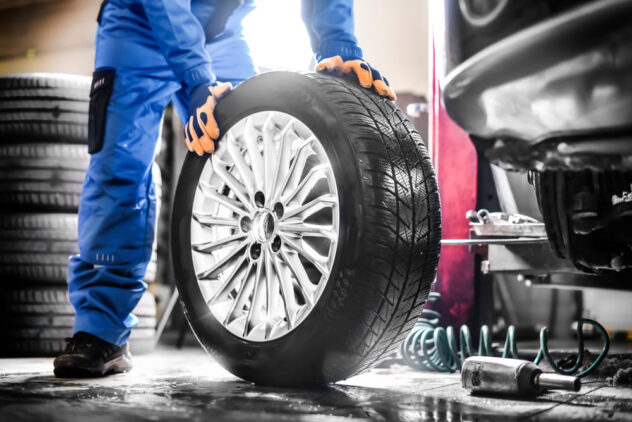Unveiling the Secrets: Investigating the Signs of Aging Tyres
How old are your car aging tyres? Do you know and have an approximate replacement date diarised, or are you waiting until they show sufficient signs of aging before you consider replacing them? There is a case to be made for the former: tyres begin to age the moment they are made, and waiting for signs of time damage to show themselves can be a risky strategy. Let’s take a look at why.

The Lifespan of Rubber
Rubber is a natural product that contains a lot of elasticity and bounce. In tyres, this flexibility along with the air pumped into the tyre’s cavity ensures a smooth and comfortable ride. However, like all natural products, rubber has a limited lifespan, and this can be further shortened by exposure to excess UV radiation and the weather. As rubber ages, it dries out and shrinks, losing that natural elasticity and becoming hard and brittle. Needless to say, brittle tyres are not as robust as new tyres which are still benefitting from the elasticity of fresh rubber and they will begin to suffer a lot of slow leaks, punctures and even blowouts. When this begins to happen, you probably should have already replaced your tyres a few months ago! So, doesn’t delay once your tyres begin to fail and you can visit Eco Tyres Services as it provides expert tyre replacement and car tyres fitting services in Stevenage, Hertfordshire.
Factors That Make Tyres Age More Rapidly
However, there are ways to help your tyres last a little longer.
- Drive within the speed limit – speeding wears your tyre’s down faster and often requires braking and turns to be performed at speed, which puts your car under greater strain.
- Don’t overload your car – the more weight your tyres have to bear, again, the faster they will wear down
- Drive moderately – flashy stunts like ‘doughnuts’, handbrake turns or even just speeding up excessively between braking points, all put a lot of pressure on your tyres and cause them to suffer a lot of wear and tear which will reduce their overall lifespan
- Inflate your tyres correctly – over or underinflated tyres are both not ideal, as modern tyres are precision engineered to work best under the recommended range of pressure
- Check your alignment from time to time – tyres that are not aligned correctly work against each other, pulling away or pushing in towards one another, and this increases the strain that the tyre is under, once again, causing excess wear and tear
How To Maintain Tyre Safety and Performance
The best way to ensure that your aging tyres last a long time in good condition is to always be mindful of them: buy the best quality tyres that you can afford, look after your car as well as possible – even something as simple as parking inside a garage rather than on the street can make a big difference – and make a plan to replace your tyres within a certain time.
Some stats to finish on: front tyres should be good for around 20,000 miles, while back tyres could last double that amount of time (but do practise tyre rotation to ensure that your aging tyres wear evenly), and well cared-for tyres should easily last at least five years of moderate use.


